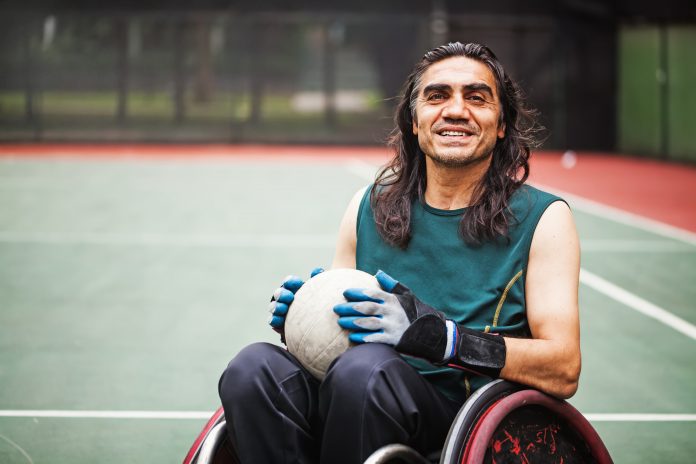Mental Health Europe point out that the New Pact on Migration and Asylum leaves behind migrants with disabilities and mental health problems – what can be done?
The European Commission has recently launched its long-awaited New Pact on Migration and Asylum. What many hoped to be a game-changer for asylum policies has been received with mixed reactions. While it leaves some room for member states to share the “burden” of incoming forced migrants in times of crisis, it also risks deepening protracted situations. Unfortunately, the Pact seems to confirm that for those hoping to find shelter in Europe, it is unlikely that the climate of the European Union (EU) will become more welcoming anytime soon.
Migrants and asylum seekers with disabilities face the same challenges as other persons. However, they find themselves at increased risk of violence and discrimination due to disrupted or inaccessible services or being confined to segregated structures and institutions.
In some cases, pre-existing health conditions heighten their risk of developing a serious illness or dying. They are at particular risk of contracting COVID-19 as the virus spreads quickly in refugee camps, where people are living in overcrowded conditions without access to adequate sanitation, food and water supplies. Moreover, women and girls with disabilities are at a higher risk of violence, trafficking and seeing their sexual and reproductive health and rights denied.
The New Pact does not consider the diversity of migrants and asylum seekers with disabilities.
A “one-size-fits-all” Vulnerability Assessment System
The EU’s proposal of a “vulnerability assessment” does not adequately consider the rights and needs of persons with disabilities. For example, the proposal fails to explicitly commit to providing reasonable accommodation and support for asylum seekers with disabilities, such as accessible communication formats.
It seems that under the New Pact, health and vulnerability assessments will be carried out during the pre-entry screening process. Such assessment will apply to all third-country nationals who are present at the external border without fulfilling the entry conditions or after disembarkation, following a search and rescue operation. While the screening should guarantee a standard of living complying with the EU Charter of Fundamental Rights, including access to emergency health care, authorities should pay “particular attention (…) to individuals with vulnerabilities, such as (…) persons with an immediately identifiable physical or mental disability.”
Persons with disabilities, including persons with mental health problems, are diverse. To request authorities to make examinations upon mere observation of “immediately identifiable disability” frankly ignores such diversity and de facto discriminates persons with disabilities. It reintroduces a medical understanding of disability and mental health which does not comply with the UN Convention on the Rights of Persons with Disabilities (UN CRPD) and international standards.
New Pact contradicts EU Disability Rights Strategy 2021-2030
The shortcomings of the New Pact are even more concerning in the light of the upcoming EU Disability Rights Strategy 2021-2030. Titled “An Equal Europe for all”, it covers all areas of disability rights issues, including humanitarian emergencies. However, it is not clear whether it will include humanitarian emergencies within the EU.
It is not the first time that EU policies are approached in silos, with a lack of mainstreaming disability across EU institutions. In 2015, the United Nations Committee on the Rights of Persons with Disabilities expressed concerns regarding the lack of inclusion of persons with disabilities in all EU policies and guidelines on humanitarian aid. The migration decision-making procedure remains inaccessible for persons with disabilities.
On the other hand, the nomination of a Commissioner for Equality in the European Commission has had a positive impact on the policies falling under her mandate. The rights of persons with disabilities have been included in the Gender Equality Strategy, the LGBTI Strategy, and the EU Roma strategic framework adopted this year. Nevertheless, mainstreaming of disability rights did not reach the new Pact under the mandate of the Commissioner for Home Affairs and Vice-President on Promoting our European Way of Life.

The narrative of persons with disabilities must be reframed
Not only did the New Pact on Migration and Asylum fail to protect the rights of persons with disabilities, but it also didn’t adopt a human rights-based approach. The language used in its text and words such as “vulnerable” and “persons with mental disorder” reflects an outdated medical approach to disability.
It is important to understand that persons with disabilities are not per se vulnerable because of their disability but are instead disadvantaged and made vulnerable due to discriminatory and inaccessible environments. In a sense, the current reception conditions for asylum seekers, continuously reaching outcries by human rights and humanitarian groups, are the magnifying glass to what it means to be made vulnerable.
In fact, to determine who is in severe mental distress (and thus is vulnerable) becomes somewhat obscure in the light of the reception conditions. People who are forced to leave their homes can go through traumatic experiences before leaving their country or during their journey. Besides, they may have prior mental health problems or develop mental ill-health upon arrival. Reception conditions themselves have a critical impact on the mental health of migrants. Other similar determinants include preventing families from reuniting or hindering their freedom of movement, all at play in Greece, for example. Tellingly, the so-called Post Traumatic Stress Disorder was taken out of the vulnerability assessment in Greece. In March 2018, the Human Rights Commissioner of the Council of Europe expressed grave concerns about the vulnerability assessment procedures, while in September 2019 the Committee on the Rights of Persons with Disabilities requested to ensure the immediate transfer of asylum seekers from the Greek islands to the mainland once identified as “vulnerable”. It is unlikely that the new Pact on Migration and Asylum can fulfil those demands.
Ultimately, the Pact failed to respond to the CRPD Committee’s recommendations and key demands of the disability movement, including the collection of data on asylum seekers and migrants with disabilities. Meaningful consultation with persons with disabilities during the development of migration policies is crucial if we want an equal Europe for all.
About the authors
Marine Uldry is a Human Rights Officer with the European Disability Forum. Marine.uldry@edf-feph.org, Twitter: @Marine_Uldry, www.edf-feph.org
Jonas Bull is a Research and Policy Officer with Mental Health Europe. Jonas.bull@mhe-sme.org, Twitter: @bulljonas2, www.mhe-sme.org











